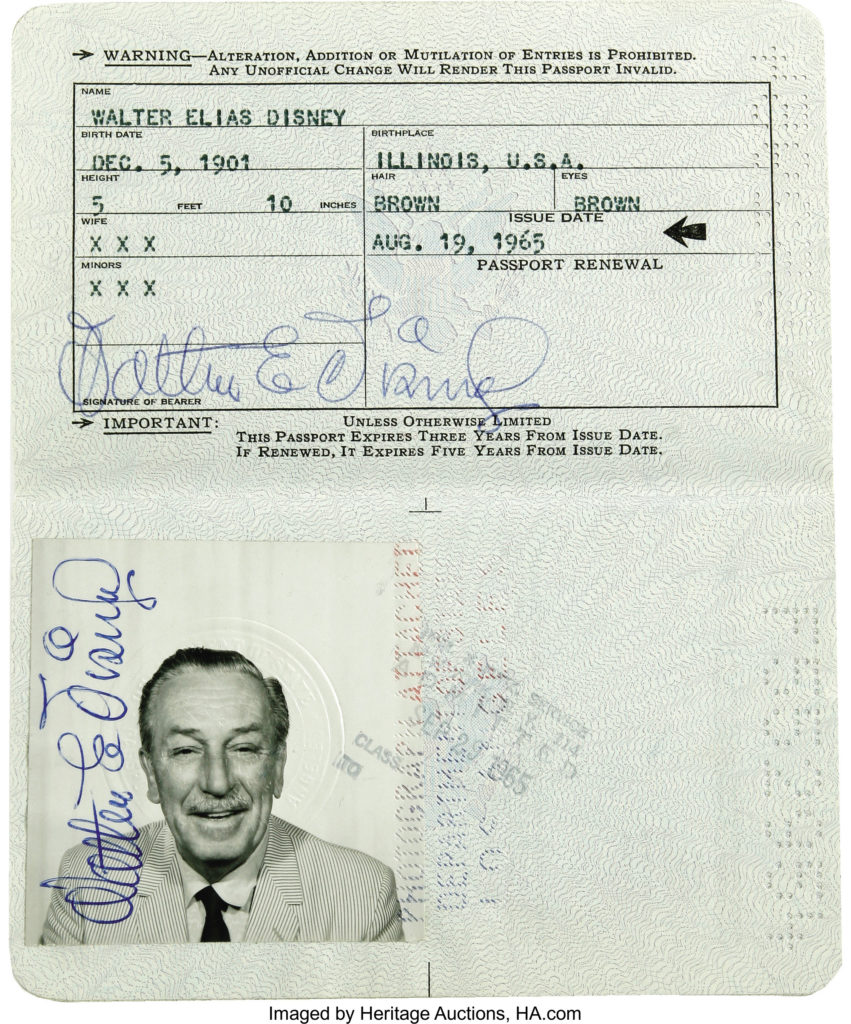
By Jim O’Neal
I never met Walt Disney. He died four months after I joined Frito-Lay in 1966 and was among the last of a generation that smoked three packs of unfiltered cigarettes a day. He died of lung cancer.
However, like virtually everyone else in Southern California, we were familiar with the incredible theme park he built in nearby Anaheim. Disneyland opened to the public on July 17, 1955, and Frito-Lay had a direct relationship with Disneyland through a Mexican food restaurant in Frontierland called Casa de Fritos (Home of Fritos). It featured a unique product called a “Ta-cup” … basically, traditional taco ingredients served in a fried tortilla cup that helped with eating on-the-go using one hand.
I met the manager, Joe Nugent, during a meeting with Frito-Lay corporate officers from Dallas (The Flying Circus) who were in Los Angeles to review our zone’s 1967 profit plan and operating budgets. The only surprise was a mild rebuke to Nugent: “Dammit Joe, we told you last year that we don’t want to make a profit. The whole idea is to expose more people to Fritos and build the brand!” Joe just nodded and resorted to his previous tactic of lowering prices in the hope of lowering profits. Alas, it seemed that the more he dropped prices, the more the crowds waited in line to buy even more. What he experienced was the 1960s version of leveraging overhead costs, which lowered margins but increased total profitability. The Sam Walton slogan of “stack ’em high and sell ’em low.”
Another surprise was the mid-1967 completion of Club 33 at Disneyland, a private club with a top-notch restaurant that could only be accessed with a special card and hidden elevator. Frito-Lay was one of 33 local companies with membership, along with Carnation, Bell Telephone and Bank of America. It was the only place in the park where alcoholic beverages were served and in 2010, I read there was a 14-year waiting list for new members. Frito-Lay is now the crown jewel in the PepsiCo empire and analysts are advocating they get out of the beverage business.
From what I’ve read, Walter Elias Disney was a lot like the two men who started the Frito and Lay companies: humble beginnings, entrepreneurial and ambitious. Disney went broke when no one would buy his first animated films, Alice Comedies, so he moved from Kansas City to Hollywood in 1923, took out a home equity loan for $2,500 and rented the back room of a local real estate office where he created the studio that would become the Walt Disney Company. What a success story from another “garage” operation it has become.
We then moved to Cupertino in the Bay Area, where the business guys only seemed to talk about technology (using names like Ampex, Atari and H-P) and whispered about the next garage operation that would be a huge success. What we didn’t realize is that we had moved into one of the greatest wealth-creation areas in the history of the world … where two members of the Homebrew Computer Club – both college dropouts – set up shop to sell their techie friends the circuit boards one of them had invented. There are several versions of why they named their company Apple, but the consensus is Steve Jobs had been working at an apple orchard. Our old backyard is not far from the $5 billion Apple campus, but nobody tipped us about what the future might be.
We never heard the term “Silicon Valley” or about two guys in Vermont who had pooled their resources to make ice cream in an abandoned gas station after installing a 4½-gallon freezer. Ben Cohen and Jerry Greenfield were on the opposite end of the technology spectrum when they made a low-tech fortune with Ben & Jerry’s. Of course, not every inventor sticks his hand into a tin and comes up with “Chunky Monkey.” Most will fail. Even those who receive patents and set up small companies will not make these kinds of fortunes. Consider poor Eli Whitney, who invented the cotton gin in 1793 while working as a tutor at a Georgia plantation. His was probably the most influential invention in the 18th century and it got him into the history books, but nothing in the bankbook.
But that’s not the point. The dream that it’s possible, that an idea can come out of nowhere and can – with a lot of hard work – lead to success is more alive than ever. That kid working away or thinking about dropping out of Harvard to start his own company can change the world. Still skeptical? Just ask Bill Gates.
 Intelligent Collector blogger JIM O’NEAL is an avid collector and history buff. He is president and CEO of Frito-Lay International [retired] and earlier served as chair and CEO of PepsiCo Restaurants International [KFC Pizza Hut and Taco Bell].
Intelligent Collector blogger JIM O’NEAL is an avid collector and history buff. He is president and CEO of Frito-Lay International [retired] and earlier served as chair and CEO of PepsiCo Restaurants International [KFC Pizza Hut and Taco Bell].
